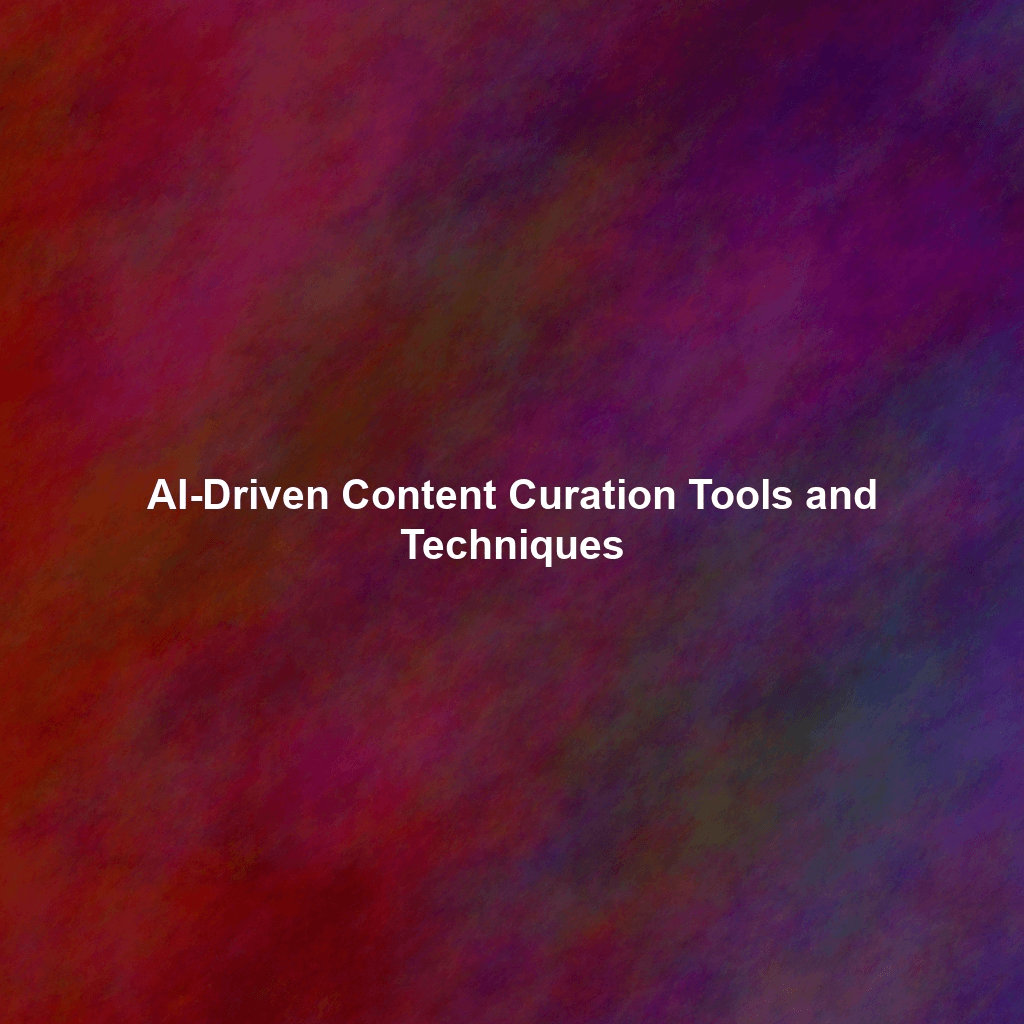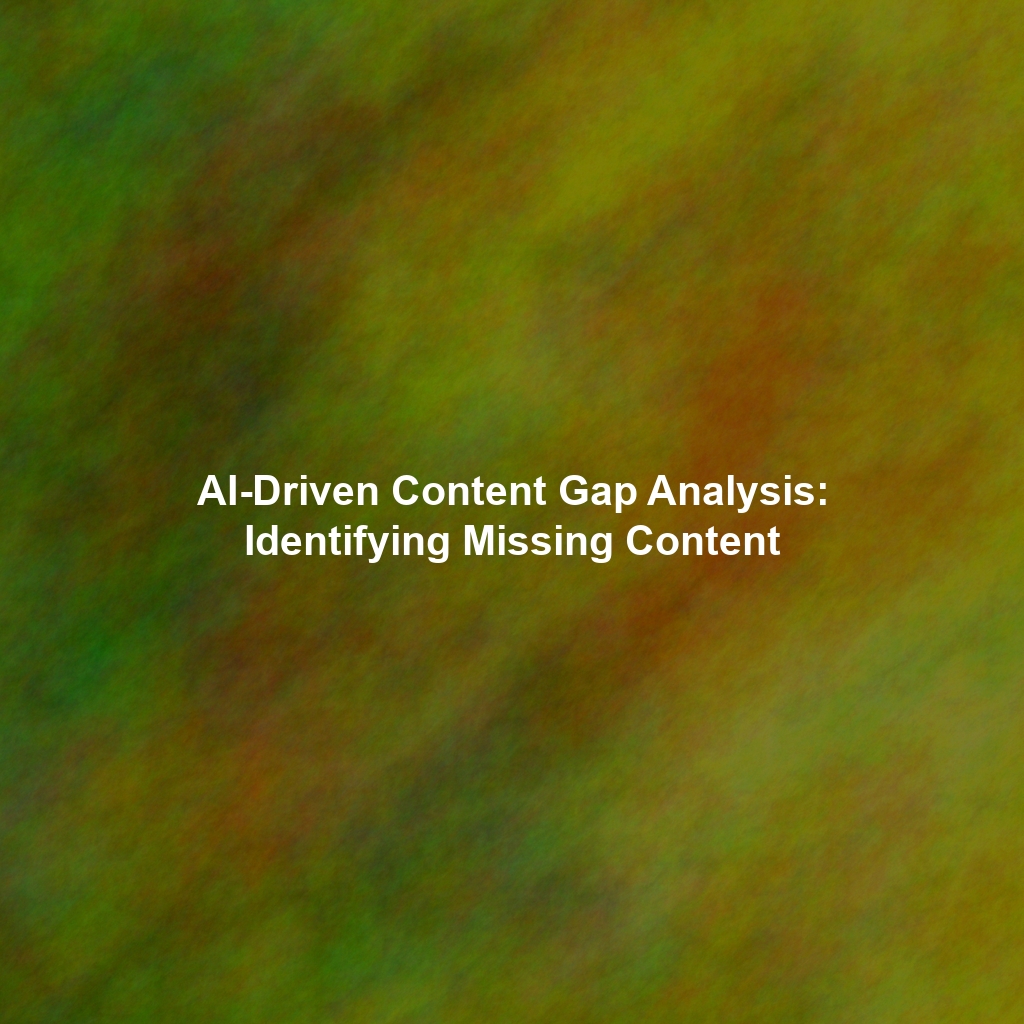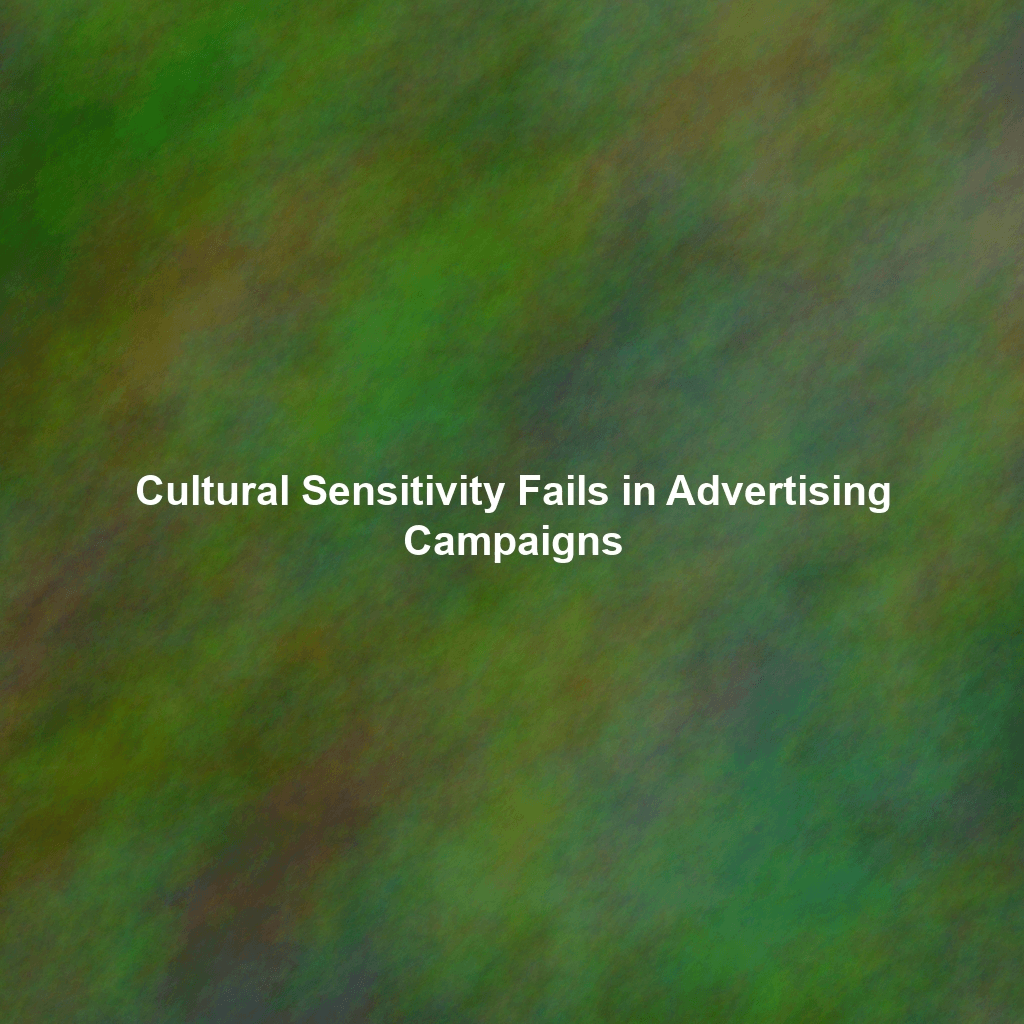The Evolution of Content Curation: Why AI Matters
How AI Enhances Content Curation: The Core Technologies
Several key AI technologies power the new wave of content curation tools:
Natural Language Processing (NLP)
NLP is the foundation of AI-driven content understanding. It enables algorithms to analyze the text of articles, blog posts, and other content formats, identifying keywords, topics, and sentiment. By understanding the context and meaning of content, NLP algorithms can accurately determine its relevance to specific user interests and needs. This is crucial for filtering out irrelevant or low-quality content and focusing on the gems that truly matter.
Machine Learning (ML)
Machine learning algorithms learn from data over time, constantly improving their ability to identify relevant content. For example, an ML-powered curation tool can track user engagement with different types of content and adjust its recommendations accordingly. If a user consistently clicks on articles about a specific topic, the algorithm will prioritize similar content in the future. This adaptive learning process ensures that the curation experience becomes increasingly personalized and effective over time.
Sentiment Analysis
Sentiment analysis goes beyond simply understanding the topic of a piece of content; it analyzes the emotional tone. Is the article positive, negative, or neutral? This is invaluable for brands that want to ensure the content they share aligns with their brand values and avoids controversial or inflammatory topics. Sentiment analysis can also help identify trends in public opinion and inform content strategy.
Content Summarization
AI can automatically generate concise summaries of lengthy articles or reports, allowing users to quickly grasp the key takeaways without having to read the entire piece. This is particularly useful for busy professionals who need to stay informed but lack the time to consume vast amounts of content. Summarization tools can also highlight key arguments and evidence, making it easier to assess the credibility and value of the source material.
Topic Modeling
Topic modeling is a technique that identifies the main themes and topics within a collection of documents. This is useful for understanding the overall landscape of a particular industry or niche. Content curation tools can use topic modeling to automatically categorize content and suggest relevant topics to users.
AI-Powered Content Curation Techniques: A Practical Guide
Implementing AI-driven content curation requires a strategic approach. Here are some practical techniques to consider:
1. Defining Your Curation Goals
Before diving into the technology, clearly define your objectives. What are you hoping to achieve through content curation? Are you looking to:
- Enhance brand authority and thought leadership?
- Drive traffic to your website?
- Generate leads and nurture prospects?
- Improve customer engagement?
- Provide value to your existing audience?
Your goals will inform your content selection criteria and your overall curation strategy.
2. Identifying Relevant Sources
AI tools can help you discover new and authoritative sources of information. Start by identifying key influencers, industry publications, and relevant websites within your niche. Feed these sources into your AI-powered curation tool and let it begin scanning for relevant content. Don’t be afraid to experiment with different sources and continuously refine your list based on performance.
3. Setting Up Intelligent Filters
Use the filtering capabilities of your AI tool to narrow down the content that is most relevant to your audience. Define keywords, topics, and sentiment criteria to ensure that only high-quality, appropriate content is selected. Consider setting up different filters for different audience segments or content categories.
4. Personalizing the Curation Experience
The ultimate goal of content curation is to deliver value to your audience. Use AI to personalize the curation experience based on individual user preferences and behavior. Track user engagement with different types of content and adjust your recommendations accordingly. Consider segmenting your audience based on demographics, interests, or purchase history and tailoring your curated content to each segment.
5. Automating Content Distribution
AI can help you automate the distribution of your curated content across various channels, such as social media, email newsletters, and your website. Schedule posts in advance, optimize content for each platform, and track performance to identify the most effective distribution strategies.
6. Human Oversight: The Crucial Element
While AI can automate many aspects of content curation, human oversight remains essential. Algorithms are not perfect and may occasionally select irrelevant or inappropriate content. It’s crucial to have a human editor review the AI-selected content before it is published or shared. This ensures that the content is accurate, unbiased, and aligned with your brand values.
This human touch also allows for adding context, commentary, and unique insights to the curated content, transforming it from simple aggregation into valuable thought leadership.
Examples of AI-Driven Content Curation Tools
The market for AI-powered content curation tools is rapidly growing. Here are a few examples of platforms to consider:
- Feedly: An AI-powered news aggregator that allows you to track your favorite websites, blogs, and social media accounts in one place. Its AI features help you discover new sources and filter content based on your interests.
- Curata: A comprehensive content marketing platform that includes AI-powered content curation capabilities. Curata helps you discover, curate, and share relevant content with your audience.
- BuzzSumo: A content marketing tool that allows you to analyze the performance of content across social media. You can use BuzzSumo to identify trending topics, find influencers, and monitor your competitors’ content strategies.
- Pocket: While primarily a “save for later” app, Pocket’s recommendations and highlighting features are increasingly driven by AI to surface the most relevant content to users.
This is just a small sampling. Research and explore different tools to find the ones that best fit your specific needs and budget.
Challenges and Considerations
While AI offers significant advantages for content curation, it’s important to be aware of the potential challenges:
- Algorithm Bias: AI algorithms are trained on data, and if that data is biased, the algorithm will also be biased. This can lead to skewed or unfair curation results.
- “Black Box” Effect: Some AI algorithms are complex and difficult to understand, making it challenging to troubleshoot problems or ensure transparency.
- Over-Reliance on Automation: It’s important to remember that AI is a tool, not a replacement for human judgment. Over-reliance on automation can lead to a decline in the quality and relevance of curated content.
- Cost: AI-powered content curation tools can be expensive, particularly for small businesses with limited budgets.
Careful planning, monitoring, and a commitment to ethical AI practices are essential to overcome these challenges.
The Future of AI in Content Curation
The role of AI in content curation will only continue to grow in the future. As AI technology advances, we can expect to see even more sophisticated tools that can understand content with greater nuance, personalize the curation experience with greater precision, and automate more aspects of the curation process. The future likely holds:
- Deeper Personalization: AI will move beyond simple keyword matching to understand individual user preferences and deliver truly personalized content experiences.
- Content Creation Assistance: AI might assist in the creation of summaries, introductions, or even entire articles based on curated content.
- Enhanced Trend Prediction: AI will become even better at predicting emerging trends and identifying content that is likely to resonate with audiences.
- Integration with other Marketing Technologies: AI-powered content curation will be seamlessly integrated with other marketing technologies, such as CRM and marketing automation platforms.
Conclusion: Embracing the AI Revolution in Content Curation
AI-driven content curation is not just a trend; it’s a fundamental shift in how we approach content marketing. By leveraging the power of AI, businesses can save time, improve accuracy, and deliver content that truly resonates with their target audience. While human oversight remains essential, embracing AI can unlock new levels of efficiency, personalization, and effectiveness in your content curation strategy. By understanding the underlying technologies, adopting practical techniques, and staying informed about the latest advancements, you can harness the power of AI to transform your content marketing efforts and achieve your business goals.
 Skip to content
Skip to content

